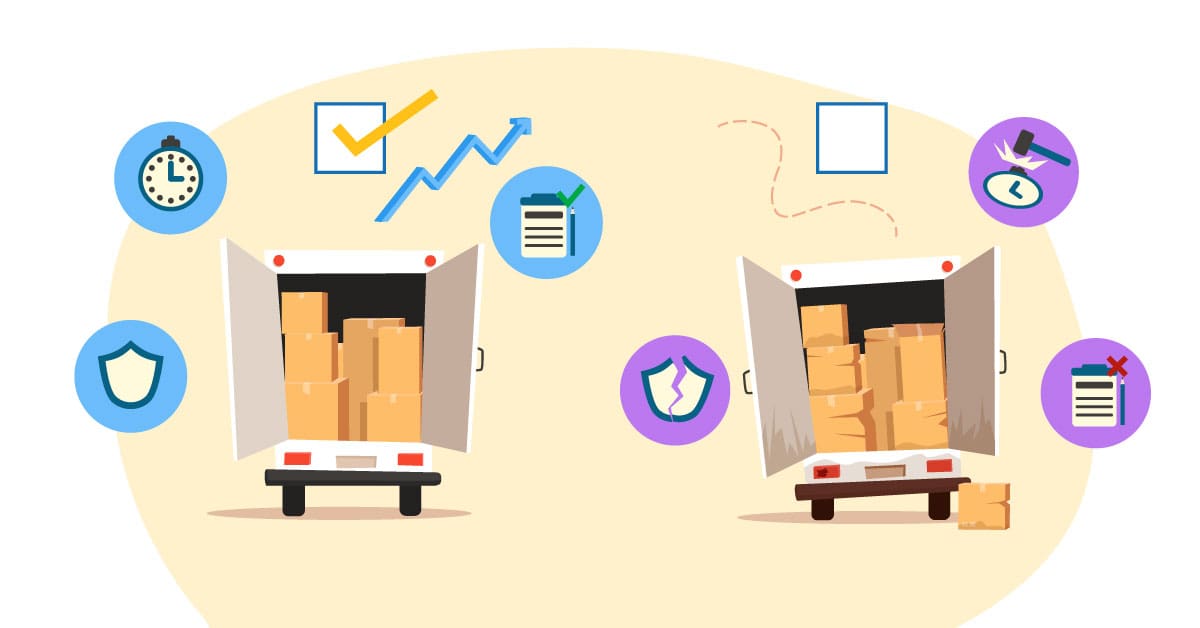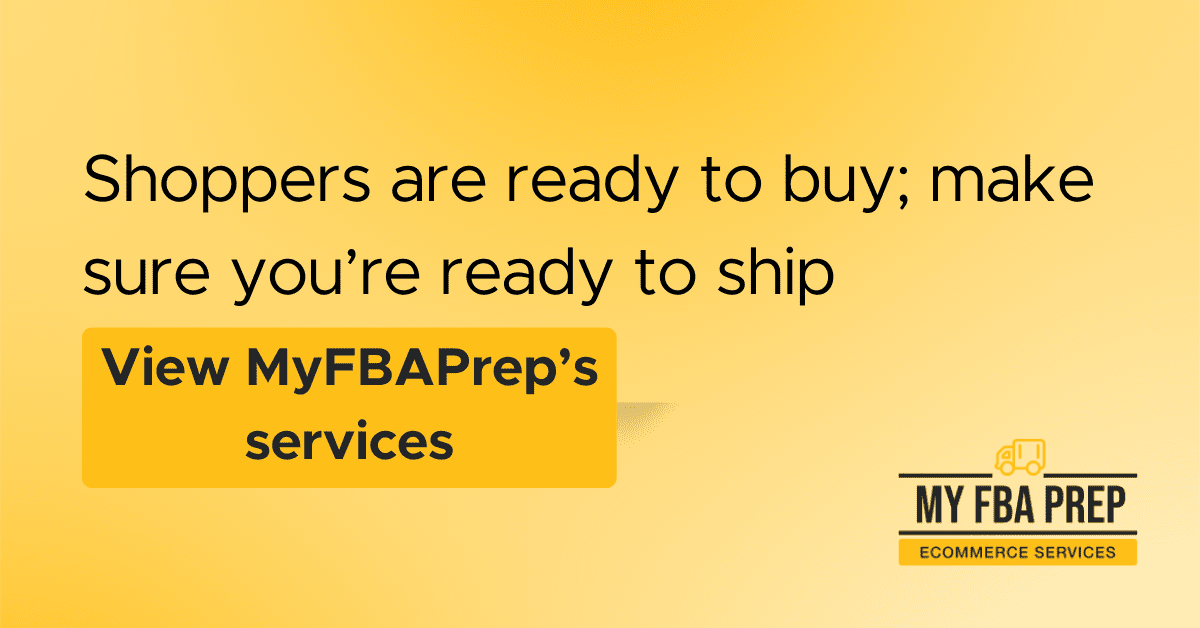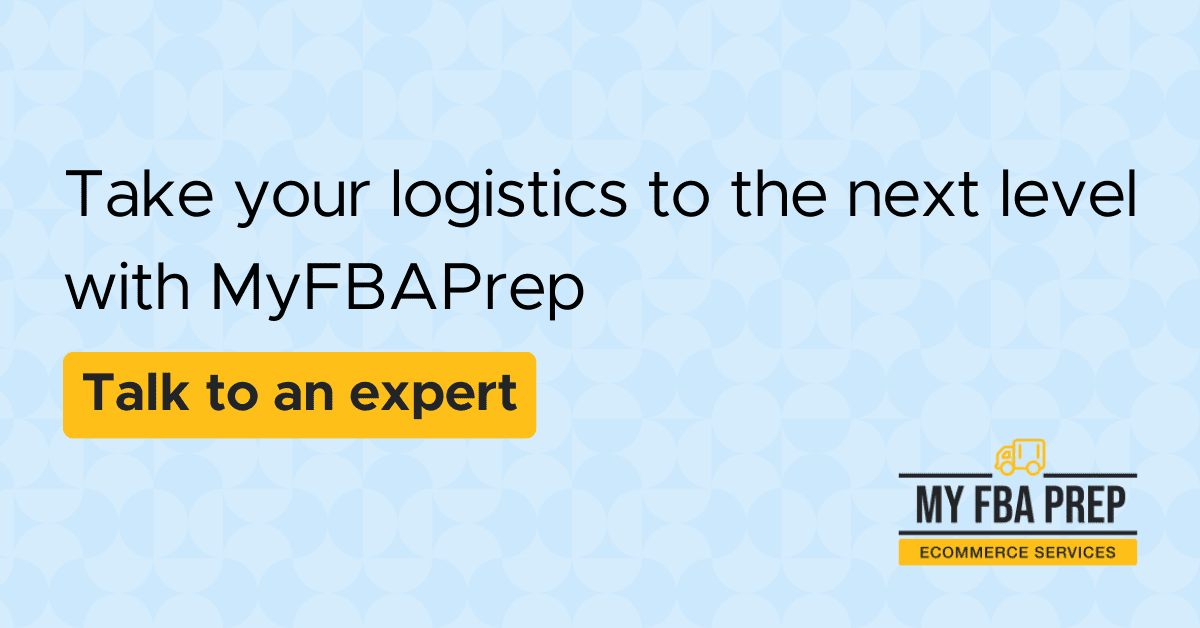
11 Effective Ways to Optimize Your Shipping

As more players enter the eCommerce market, it’s essential to find ways to stand out. There’s one area that online stores notoriously neglect that can give your brand a competitive edge; fulfillment.
Just 28% of people surveyed by DigitalCommerce 360 said they were completely satisfied with their online order delivery experiences. Clearly, there’s a lot of room for improvement, but you may be wondering how to go about it.
We’ve got you covered. In this post, we’ll share why upgrading your shipping is always a good move and the best ways to make it happen.
Is your fulfillment option causing problems? Get a makeover with MyFBAPrep.
Why optimize shipping anyway?
Optimizing backend processes may seem like a task to complete when you’ve got more time on have outgrown your existing ones, but this couldn’t be further from the truth. Acting now to upgrade your fulfillment can pay off in many ways. Let’s explore a few:
Save cash to invest
Poorly executed shipping and expensive carriers cause businesses to bleed cash. This wastage creates an opportunity cost since you could invest this cash elsewhere in the business to scale. Conversely, the more capital you save on shipping, the more you’ll have to invest.
Drive more sales
A great shipping experience isn’t just beneficial for customers, it makes your business more memorable. This, in turn, makes it easier to sell more goods to these customers and boosts your bottom line.
Improve supply chain efficiency
An optimized supply chain keeps service consistent and high quality and has positive knock-on effects on your business. For example, you can clear goods through customs, restock items, launch new offers, and manage returns efficiently and cost-effectively.
11 Strategies to uplevel your shipping process
No matter your operation size, there are some actions you can take now to build a phenomenal shipping experience. Let’s dive into some ways you can improve your fulfillment:
1. Streamline stock receiving process
On the surface, receiving inventory may not seem like a factor that can impact shipping, but backlogs in receiving inventory can cause delays in restocking and ultimately sending goods to customers. So, analyze your existing process, and remove unnecessary steps in your unloading and stock count. You could use robotic process automation to receive and arrange stock shipments.
For example, brands like Amazon and Walmart are investing in warehouse automation to streamline supply chain management, fulfillment, and logistics. This includes tasks like receiving, sortation, and retrieval.
2. Revaluate packaging for internal and external shipments
Ever received an oversized box containing a small item or a package excessively wrapped with bubble wrap? It’s not ideal. These scenarios not only leave customers perplexed, but they can increase your shipping costs and waste. It’s also essential to use the right dunnage for the transportation of your goods to and from warehouses and in customer packages to protect items from damage. Some tips include:
- Establish criteria and standard operating procedures for outer packaging selection.
- When shipping goods to your warehouse, optimize shipment weights at the point of loading.
- Bulk ship items to your warehouses when spreading stock.
3. Upgrade your prep and pack process
The faster your prep and pack process, the faster you can dispatch orders. So create packing processes with the most efficient methods for creating. Here are some tips to optimize your prep and pack:
- Create standard operating procedures for each product’s packaging requirements and distribute them among manufacturers and staff.
- Train staff on how to create and pack each product type you sell.
- Work with one manufacturer to get labeling outer packaging.
- Pre-packing certain items ahead of time in preparation for shipment and storing them in.
- Ship and store pre-packed items in key locations.
4. Work with an experienced multichannel fulfillment provider
If organizing and shipping orders internally don’t work for you, there’s another way to build a top-tier shipping process. Use a fulfillment partner that covers multiple channels and steps such as prep, pack, delivery, and returns. The fulfillment provider should also have:
- Experience in managing the products you sell
- The facilities, equipment, and staff to execute
- Warehouses distributed in key locations
- Reliable carrier partners
For example, at MyFBAPrep, we have 50+ warehouses globally, offer 3PL and 4PL services, and can handle any volume. We’ve also transformed a shipment of 50,000 dog bones into individual packs with J-Hooks and hang tags. Plus, our team customized the prep process by making custom plywood tools to boost productivity and maintain high hygiene standards.
5. Consider zone skipping
If you’ve got high order volume and ship to specific regions regularly, shipping options like zone skipping can come in handy. Zone skipping is a fulfillment method that involves sending a large number of packages (by truckload or less-than-truckload) to a carrier’s parcel hub, which is close to the parcel’s final stop.
Many retailers and eCommerce brands engage in zone skipping because the practice of skipping carrier zones allows them to save costs and get goods to customers faster and easier with less product damage.
Before you sign up with a carrier, ensure:
- They have experience in zone skipping for your product type
- The cost and time savings are worthwhile
- Have resources to build the right prep and dispatch setup
6. Offer subscriptions
If there is one shipping service shoppers love, it’s subscriptions. The market rocketed to more than $23.18 billion in 2021. Work out the products shoppers buy the most, along with the typical buying frequency and quantity, and use the information to guide your offers.
To get your shipping right, you’ll need tech solutions to share customer data and produce order reminders seamlessly. Solutions like Nexer, ReCharge (for Shopify sellers), and Subbly,
You’ll also need to find ways to fulfill orders fast, especially if you pack and send subscription boxes once a month. For example, you could assign specific days to prep outer packaging boxes and educate staff on efficient packing methods.
7. Present shipping multiple options
Shipping costs can be the difference between whether someone buys or walks away. 54% of shoppers have abandoned an order due to delivery costs. Also, 70% of people consider free shipping to be the most important factor, followed by shipping speed and delivery options (43%) when considering delivery from retailers.
In the same breath, costly carriers and fulfillment strategies can wipe your margins, so it’s important to find a balance between customer wants and keeping profits. For example, you could offer multiple shipping options that match customer needs, e.g., free, expedited, BYOP, and price shipping and returns costs into your products. You could also look for the most cost-effective delivery channels.
8. Make tracking goods a memorable experience
Did you know 24% of buyers will abandon a cart if delivery dates aren’t given? Tracking orders is important for both parties. But when it comes to customers tracking shipments should be an exciting experience that builds anticipation and reduces buyer’s remorse. Here are some ways to keep customers engaged during the delivery process:
- Share the parcel tracking number within 24 hours
- Provide updates on where their order is
- Show time slots on when the order will arrive in their neighborhood
- Offer an hour’s notice of delivery and driver details or allow shoppers to book delivery slots
- Share photos of where the item was left
- Share tips on how they can use the products bests
- Encourage shoppers to share content on receiving the parcel and unboxing items.
Massive growth on the horizon? Level up your fulfillment strategy to maximize results.
9. Distribute clear shipping terms and conditions
Not knowing what to expect from a company can be frustrating and blindsiding. So be upfront about your terms and conditions, especially during peak season.
Share updates to your shipping schedule in multiple areas, so regulars become aware of any changes, and place your terms and conditions in multiple high-traffic areas to increase visibility.
10. Optimize stock storage location to reduce shipping times and costs
Going out of stock slows down your shipping process and forces you to rush in orders which cut into your margins. To avoid this scenario, it’s critical to optimize your inventory and shipping, so they work together to keep optimal stock levels.
- Store goods close to demand and in quantities that will match sales velocity.
- Have buffer stock in key areas.
- Choose carriers that can offer fast and affordable transportation to hubs and shipping to customers both internationally and domestically. (Note: shipping charges should reduce as your order volume increases).
11. Make your returns process painless
Your eCommerce business’ reverse logistics process is just as crucial as your outbound shipping. The right strategy would inspire shoppers to give your brand another chance even if the product wasn’t the right fit. Offer multiple stress-free options like Buy Online Return In Store (BORIS), paperless returns, and locker drop-offs.
To keep your returns operations economical and efficient, it’s critical now which products make sense to return to your warehouses and which products can be written off a loss without requiring them back. It’s also important to know what you’ll do with goods once they are returned. E.g. refurbishing and selling them on an alternative marketplace.
Wrapping up — Power ahead with streamlined fulfillment
Shipping offers your brand the chance to shine and make operations more profitable. Also, the better your shipping experience, the increased likelihood that customers will return. So, take advantage of this opportunity. Step back from your current operations and pinpoint the areas that need work. Ask customers for feedback and onboard reliable shipping solutions, and start your optimizations in areas that’ll have the most impact first. Take action, and soon, your fulfillment will be running like a well-oiled machine.




